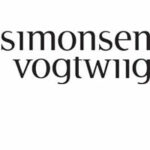-
Does your jurisdiction have an established upstream oil and gas industry? What are the current production levels and what are the oil and gas reserve levels?
Romania has a petroleum history reaching back more than 150 years, as the country was the first crude oil producer in the world and the first to build an oil refinery. More than 90% of Romania’s gas consumption is produced from internal sources, with an average natural gas production in recent years of about 11 billion cubic meters (bcm). Furthermore, it is expected that the country will soon become a gas exporter, mainly due to recent discoveries in the Black Sea. The related offshore reserves are estimated to amount to 200 bcm, creating the premises for the natural gas production to double in the upcoming years (i.e., to 20 bcm per year).
A game-changing moment for Romania was 15 June 2022, when the offshore Midia Gas Development Project (MGD Project) owned by Black Sea Oil & Gas (a venture of Carlyle International Energy Partners and the European Bank for Reconstruction and Development), Petro Ventures and Gas Plus – the first new offshore gas production and onshore-offshore infrastructure developed in Romania in the last 30 years started production. MGD Project shall ensure 10% of Romania’s domestic gas needs for an estimated period of 15 years. Commencement of production by MGD Project has set the stage for future developments of the country’s offshore energy potential at the Black Sea, including its suitability to ensure coexistence between hydrocarbon and emission free green energy production.
Looking forward, according to the publicly available information, as on 21 June 2023, OMV Petrom and Romgaz (the largest producer and main supplier of natural gas in Romania) announced that the final investment decision on Neptun Deep project was taken, the commencement from the gas fields of Neptun Deep offshore concession is expected to come on stream in 2027 and production at the plateau is expected at will be approximately 8 bcm annually (~140,000 boe/day).
OMV Petrom and Romgaz declared that will jointly invest up to EUR 4 billion for the development phase of the project which sets to bring on stream around 100 billion cubic meters of natural gas, for almost 10 years.
Crude oil production in Romania is on a downward slope, with a sub unitary level of reserves replacement, due to the high degree of deposits depletion.
According to the data centralized by the National Institute of Statistics (INS), during January-September 2024 Romania produced a quantity of crude oil of over 2,024 million tons of oil equivalent (Mtoe), 79,300 tons of oil equivalent less (-3.8%) than in the same period of the previous year.
According to the latest Energy Balance Forecast, published by the National Strategy and Forecast Commission (CNSP), crude oil production is expected to decrease by 2027 with an average annual rate of 2.5%. According to CNSP, this is the consequence of the natural decline of deposits and the maintenance of existing production units. Correlatively, it is expected that the import of crude oil to increase with an average annual rate of 1.5% by 2027.
As regards natural gas, according to INS data, Romania’s domestic production reached 5.635 Mtoe during January-September 2024, marking a 0.8% increase compared to January-September 2023. Also, CNSP estimates that natural gas production is expected to grow at an average annual rate of 1.7% between 2024 and 2027.
For 2024, production is forecasted at 7.675 Mtoe (+0.6%), rising to 7.79 Mtoe in 2025 (+1.5%), 7.907 Mtoe in 2026 (+1.5%), and 8.176 Mtoe in 2027 (+3.4%).
The exact oil & gas reserves are not public, such being classified by the applicable legislation as work secret. Nevertheless, according to aggregate data reported by OMV Petrom (largest oil producer and second largest gas producer in Romania), the proved hydrocarbons (oil and gas) reserves managed by OMV Group in Romania amount at 477 Mtoe, meaning a slight decrease as compared previous reporting.
-
How are rights to explore and exploit oil and gas resources granted? Please provide a brief overview of the structure of the regulatory regime for upstream oil and gas. Is the regime the same for both onshore and offshore?
In accordance with the Romanian Constitution and Petroleum Law no. 238 of 2004, as amended and supplemented (Petroleum Law), all petroleum resources found in the subsoil of Romania’s national territory, as well as in the Romanian exclusive economic zone in the Black Sea are in the public property of the State and can be exploited by private entities on the basis of a concession agreement.
Pursuant to the law, an oil and gas concession (also called license) is granted for exploration, development and exploitation activities following a public competitive procedure organised by the National Authority for Regulation in the Field of Mineral Resources, Petroleum, and Geological Carbon Dioxide Storage (NAMRPSG), formerly National Agency for Mineral Resources (NAMR). Any interested party may initiate the procedure. The term of the licence is of maximum 30 years, with an option to extend up to 15 years more.
Onshore and offshore licences are granted under almost identical terms and procedures. While minor differences may exist between licenses in terms of timing and scrutiny, the offshore and onshore project development processes are rather different, the offshore industry having its own special legislation.
-
What are the key features of the licence/production sharing contract/concession/other pursuant to which oil and gas companies undertake oil and gas exploration, development and production?
As mentioned above, oil and gas concessions are granted for the various phases of the petroleum activities. However, the exploration activities are regulated rather distinctly (and may even be allowed as a separate single activity, based on a permit, only) from development and production activities. In a nutshell, a licence has two main stages, i.e. the exploration stage and the development and production stage.
-
Are there any unconventional hydrocarbon resources (such as shale gas) being developed and produced and is there a separate regulatory regime for those unconventional resources?
Unconventional resources are not currently exploited in Romania.
There was an attempt to develop shale gas projects in the country back in 2012-2014 but due to public backlash and a political reluctance to approve controversial projects (as the shale gas ones were viewed in Europe at the time), the investor abandoned its Romanian gas shale projects and no other shale gas projects were put into question.
Moreover, although the existing oil and gas legislation does not expressly prohibit shale gas, in the unlikely scenario in which the implementation of shale gas projects would be envisaged at a future point in time, the general view is that a new dedicated legislation would be necessary to implement such projects.
-
Who are the key regulators for the upstream oil and gas industry?
The key regulators in Romania are:
NAMRPSG (formerly NAMR) As of 2 July 2024, when Emergency Government Ordinance no. 81 of 2024 came into effect, NAMRPSG is the main regulator in the field of petroleum.
NAMRPSG is the representative of the State in relation to natural mineral resources, holding the country’s resources and reserves inventory. Notably, NAMRPSG organizes the public tenders for granting of petroleum concessions, confirms the technical and financial capabilities of titleholders to be, approves and supervises the carry-out of petroleum operations, approves the reference price against which royalties’ value is determined, and enacts secondary legislation related to the upstream industry.
- The National Energy Regulatory Authority (NERA).
NERA is the energy regulator in charge of issuance and monitoring of the implementation of secondary legislation required for the proper functioning of the country’s energy sector with the observance of equality, non-discrimination, fair competition, transparency and consumer protection principles. In the upstream petroleum sector, NERA also issues various permits and licenses, such as the set-up and operating licenses for upstream pipelines and the production/supply licenses.
- The Competent Authority for Regulating Offshore Petroleum Operations (CAROPO).
CAROPO is the independent body in charge with offshore safety matters and among its attributions are the acceptances of the Reports on Major Hazards and the performance of related inspections.
-
Is the government directly involved in the upstream oil and gas industry? Is there a government-owned oil and gas company?
Given the institutional and legislative background as well as the Government’s commitments undertaken for acceding to the European Union, the Romanian oil and gas industry was gradually privatized after 1989 (the year which marked the fall of the communist regime).
As a result of the privatisation process, the former state-owned companies have been privatized but the Romanian State still holds shares within its major players, such as Romgaz (largest natural gas producer), where it holds a 70% stake and OMV Petrom (largest oil producer and second-largest natural gas producer), where it holds a stake of about 20%.
Notably, an important step for the state-owned companies in the upstream industry, came in 2022 when Romgaz acquired 50% interest in Neptun Deep offshore concession following ExxonMobil’ exit. Currently, Romgaz and OMV Petrom are the titleholders of the offshore Neptun Deep Block.
-
Are there any special requirements for, or restrictions on, participation in the upstream oil and gas industry by foreign oil and gas companies?
Until 2020, foreign companies were almost equally treated as Romanian companies. The only restrictive requirement was to incorporate a Romanian subsidiary or a branch and to maintain it for the duration of the petroleum agreement.
However, via the amendments brought in early 2020 to the Petroleum Law, several restrictions on grounds of national security regarding to the holding of petroleum concessions were introduced. According to the said: (i) the granting of a new petroleum concession may be refused to any entity which is effectively controlled by nationals or entities originating from outside of the EU, (ii) the Government was granted the right to terminate on-going petroleum agreements having as titleholder an entity which is effectively controlled by nationals or entities originating from outside of the EU, and (iii) any direct or indirect transfer of a participating interest in a petroleum concession may be performed only with the prior approval of the Government.
It is to be noted that the above restrictions have been enacted in order to implement the EU Directive 94/22/EC on the conditions for granting and using authorizations for the prospection, exploration and production of hydrocarbons. However, such directive only provided for the possibility of the Government to refuse issuance of new concession agreements on grounds of national security (point (i) above), while points (ii) and (iii) might be interpreted as adding to the EU Directive and could be further challenged on several Constitutional and/or European law grounds or even considering the right to property as established by the European Convention for Human Rights.
Furthermore, the regulatory framework regarding offshore operations contains certain local content requirements, as further presented under section 10 below.
-
What are the key features of the environmental and health and safety regime that applies to upstream oil and gas activities?
The carry-out of petroleum operations require performance of a specific environmental impact assessment, of health and safety regulatory procedures under national laws transposing EU legislation (such as Directive 2014/52/UE and Directive 2013/30/EU), and the observance of international industry practices. Depending on the type of the operations, capacity thresholds and location, the transboundary impact may be incidental.
Furthermore, specific environmental obligations for all petroleum projects (e.g., environment restoration obligations in case of abandonment, reporting obligations, etc.) are provided by the Petroleum Law, while Offshore Safety Law no. 165 of 2016 (Offshore Safety Law) provides environmental obligations relating to offshore projects.
The Offshore Safety Law transposes in the Romanian legislation the 2013 EU Directive on the safety of offshore oil and gas operations, enacting various obligations for operators of offshore petroleum operations and owners of installations with a view to prevent and mitigate major hazards (e.g., preparation of the Safety Case).
-
How does the government derive value from oil and gas resources (royalties/production sharing/taxes)? Are there any special tax deductions or incentives offered?
Romania has a royalty-based system. The most recent amendment to the royalties regime came into effect via the enactment of Emergency Government Ordinance 91 of 2023 (EGO 91) on 27 October 2023.
Following such amendment, the royalty regime is the following:
- For petroleum agreements in effect at the date of enactment of EGO 91 and which specifically mention the applicable rates, the royalty shall be the one as provided by the Petroleum Law when such agreement was concluded; while
- All petroleum agreements entered into after the enactment of EGO 91, as well as the ongoing petroleum agreements which do not have the royalty rates embedded, are subject to the royalty regime implemented via EGO 91.
According to the Petroleum Law, as amended via EGO 91, the royalty applicable to natural gas ranges between 4.5% and 15%, the maximum threshold being for the quarterly production in excess of 200 cm, while for crude oil and condensate the royalty ranges between 4.5% and 16%, the maximum threshold being for the quarterly production in excess of 100 toe.
The royalty percentage is computed against the quarterly production levels of the fields. Notably, with the exception mentioned at section 10 below, the natural gas royalty is computed against the reference price approved by NAMRPSG and which is the CEGH Day-Ahead price and not the realized price.
In respect of the fiscal regime, the applicable legislation provides for some minimal tax deductions such as the exemption from excise duty for natural gas or the exemption from taxes for gas import, but no exemption for specific oil related activities.
Companies undertaking both onshore production and supply of natural gas are subject to a supplemental tax on the additional revenue realised following the deregulation of prices in the natural gas sector (Onshore Supplemental Tax). Ranging between 60% (applicable to prices up to RON 85/MWh) and 80% (applicable to prices exceeding RON 85/MWh), the Onshore Supplemental Tax is applicable to the supplementary revenues minus the royalties due in relation to the said incomes and the investments made by the titleholder in the upstream sector (up to a 30% of such investments).
Also, the titleholders of offshore petroleum agreements have the obligation to calculate, declare and pay the tax on additional revenues (Offshore Supplemental Tax) as provided under the Offshore Law no. 256 of 2018 (Offshore Law). Pursuant to the amendments introduced via Law no. 157 of 2022 amending and supplementing the Offshore Law (Law 157) the same fiscal regime is applicable to onshore concessions deeper than 3,000 m isobathic. The Offshore Supplemental Tax ranges between 15% (applicable to prices between RON 85/MWh and 100/MWh) and 70% (applicable to prices exceeding RON 190/MWh) of the additional revenue. Also, the deductibility of investment made in the offshore and deep-onshore is limited to 40% of the value of the related Offshore Supplemental Tax.
With regards to the amendments brought by Law 157 we note, inter alia that the investment deductibility threshold was raised to 40% vs. 30% as provided under the former law.
revised the threshold provided for the calculation of the tax and.
-
Are there any restrictions on export, local content obligations or domestic supply obligations?
As EU member, Romania must observe the Third Energy Package which aims to create a fully effective single energy market. This is in line with the Treaty on the Functioning of the European Union as well as with the core of EU law, the single market and its four freedoms: free movement of goods, capital, services, and labour. As such, except for limited exception such as the public service obligations, export restriction and/or domestic obligations should not be allowed.
Albeit, since 2007 (the year which marked Romania’s accession to the European Union), the applicable legislation has been continuously amended and many times some kind of export restrictions and/or domestic supply obligations have been enacted in relation to the natural gas sector. This matter has been a highly sensitive issue discussed over the last years between the Government of Romania and the European Commission.
For the natural gas sector, no straightforward export restrictions are provided under Romanian legislation. However, pursuant to the 2022 amendments of the Offshore Law, the State has the right of first refusal for the purchase of gas produced by offshore and deep-onshore fields. Also, the State has the right to impose temporary restrictions on prices and sale operations concerning the gas quantities (in relation to the household consumers and thermal energy production) all in line with the fulfilment of the obligations under EU solidarity mechanisms.
In the context of the current energy crisis, further to Emergency Government Ordinance 27 of 2022, as further amended and supplemented (EGO 27), valid until 31 March 2025, gas producers were required to sell their uncontracted gas quantities to suppliers of household consumers or suppliers of thermal energy producers at different price caps (e.g., for the period between 1 April 2022 – 31 March 2024 at the price cap of RON 150/MWh (approx. EUR 30/MWh) and for the period between 1 April 2024 – 31 December 2024 at the price cap of RON 120/MWh (approx. EUR 24/MWh) and to ensure up to 75% technological consumption of the transmission and distribution operators at the sale price cap during the aforementioned periods based on the relevant price cap (Capped Market Obligation).
Also, the temporary 40% central market obligation of producers (and other market participants) which was supposed to be in place until end 2022 has been extended until 31 December 2024, and until 31 August 2023 the corresponding gas quantities are to be in fact sold at the afore-mentioned price cap. The gas quantities subject to the Capped Market Obligation: (i) are exempted from the tax on supplementary profits, and (ii) the petroleum royalty is payable against the price cap, as opposed to the general rule pursuant to which the royalty is payable against the reference price approved by NAMR.
Local content obligations are provided by law only in respect of offshore concessions, the main one being that at least 25% of staff involved in the operations must have a fiscal residency in Romania, the non-resident subcontractor’s obligation to establish and maintain a local subsidiary for the entire duration of the agreement, and the priority purchase of goods and services from local/EU-based providers (under equivalent technical and pricing conditions).
-
Does the regulatory regime include any specific decommissioning obligations?
Abandonment and other decommissioning obligations aimed at reaching reinstatement to the situation prior to the performance of petroleum operations are provided for under various laws, such as environment protection regulations and the petroleum legislation. Such obligations entail going through strict regulatory procedures and obtaining necessary permits in relation thereto.
-
What is the regulatory regime that applies to the construction and operation of offshore and onshore oil and gas pipelines?
Starting 2016, Romania started enacting specific legislation providing for offshore development projects, the main pieces of legislation being the Offshore Safety Law and the Offshore Law. Both these enactments are complemented by specific secondary legislation and are to be construed and implemented in the context of the wide general regulatory legal framework. The Offshore Law addresses specifically, the development of infrastructure, including the laying of offshore pipelines which is allowed on the basis of a construction permit to be issued by the Ministry of Energy pursuant to the performance of clear regulatory procedure. At their turn such procedures entail the prior obtaining of a series of permits (such as an environmental permit, a water management permit, archaeology clearance, etc.). A set-up permit issued by NERA is also required prior to the commencement of the pipe laying activities. The operation of these pipelines follows the general legal regime applicable to upstream pipelines, the upstream pipeline operating license to be issued by NERA being the most important regulatory document to be obtained by the operator, along the related environmental and water management authorizations. Depending on the features of the project, certain parts of the pipeline may be subject to the offshore safety regulatory regime, like the rest of the offshore infrastructure.
-
What is the regulatory regime that applies to LNG liquefaction plants and LNG import terminals? Are there any such liquefaction plants or import terminals in your jurisdiction?
Romania showed interest in developing LNG production, understanding that liquefied gas is an important factor to economic development and energy security.
Presently, the country has only two licensed operators for LNG supply and no licensed operator for LNG receiving terminals although LNG operations are envisaged by the applicable legislation which provides for the general regime applicable to such operations, the minimal technical and permitting requirements and licensing terms and conditions.
According to the revised Integrated National Energy and Climate Plan Of Romania 2025-2030 (PNIESC) among the policies and measures referred to is the construction of a LNG terminal located on the Black Sea coast, the construction of a telescopic natural gas transportation pipeline Tuzla-Amzaccea-Podișor (308 km) and the interconnection of the Natural Gas National Transmission System to the LNG terminal by building a natural gas transportation pipeline, about 25 km long. Such project is also referred in the Development Plan of the Natural Gas National Transmission System (2024-2033) and ENTSO-G TYNDP 2024.
-
What is the regulatory regime that applies to gas storage (not LNG)? Are there any gas storage facilities in your jurisdiction?
Natural gas storage has a major role in ensuring the security of supply by covering consumption peaks caused mainly by low temperatures registered during the cold season, as well as maintaining the optimal operating characteristics of the transmission system.
Such activity is considered a public utility service of general interest and, therefore, is awarded by way of a concession agreement granted by NAMRPSG. Furthermore, various authorizations and licenses are required to be issued by NERA in relation thereto, such as the storage system set-up authorization or the related operating license.
It is worth mentioning that in the context of the measures imposed by EGO 27, the obligation of natural gas suppliers to set up minimum gas stocks at the level to be set by NERA was temporarily reinstated.
The two existing storage system operators of Romania have underground gas storage facilities with a total active capacity of 33,275 TWh/gas storage cycle. Romgaz (via Depogaz Ploiesti) holds a license to operate 5 underground natural gas storage deposits, developed in depleted gas fields, whose cumulative capacity represents approximately 90.54% of Romania’s total storage capacity.
-
Is there a gas transmission and distribution system in your jurisdiction? How is gas distribution and transmission infrastructure owned and regulated? Is there a third party access regime?
Romania has both transmission and distribution systems.
The country has a single natural gas transmission system, which is owned by the State and operated by Transgaz, the state-controlled TSO company, on the basis of concession agreement granted by NAMRPSG. The system has a total network length of 13,110 km (8,150 mi) of pipelines with diameters between 50 mm (2.0 in) and 1,200 mm (47 in) and has an annual transport capacity of 30 billion cubic meters (1.05 Tcf).
Theoretically, in accordance with the applicable law transposing the EU legislation, investors are allowed to build and operate their privately owned transmission systems. Such systems would be subject to a services concession agreement granted by NAMRPSG as well as various authorisations and licenses issued by the NERA. However, no such private systems exist.
The distribution systems are owned by private companies and operated by 27 operators, the largest being Distrigaz Sud and E.ON,. Various authorizations and licenses are required to be issued by NERA in relation thereto, such as the distribution system set-up authorization, the operating license or the supply license.
A third-party access regime is available both for gas transmission and distribution systems. Within certain rules, the operators must ensure the access of third parties under non-discriminatory and transparency conditions but within the limits of systems capacities.
-
Is there a competitive and privatised downstream gas market or is gas supplied to end-customers by one or more incumbent/government-owned suppliers? Can customers choose their supplier?
As already mentioned under section 6 above, given the institutional and legislative background and membership to the European Union, the Romanian gas industry was gradually privatized after 1989 (the year which marked the fall of the communist regime) and was fully liberalized in 2020. Consequently, the downstream gas market is competitive and mostly privatised, the suppliers and distributors having private majority control.
The subject of the liberalization of the Romanian gas market has been highly mediatized, various agreements being reached by the Romanian State with the European Union in order to prolong the deadlines for full liberalization and, as of 1 July 2020, the Romanian natural gas market is fully liberalized. However, in the context of the current energy crisis, further to EGO 27, until 31 March 2025 gas suppliers cannot sell gas to either house-hold and industrial consumers (in the limit of an yearly consumption of 50,000 MWh) at a price higher than RON 370/MWh (approx. EUR 75) (Sale Cap). Noteworthy, similar provisions are also applicable in relation to electricity.
Currently, the process of changing the supplier is free of charge, with no fees or charges allowed. The customers have the right to switch suppliers at any time, without opposition from any involved parties, and can terminate their current contract as needed. Such change must be compliant with the contractual terms and the Regulation on the organization and operation of the online platform for switching electricity and natural gas suppliers, as outlined in NERA Order no. 3 of 2022, as amended and supplemented. Such a process allows for an effective and swift switch, in full compliance with the maximum deadlines provided by EU and domestic law.
-
How is the downstream gas market regulated?
Romania’s legislation almost always has provided for some type of centralised market limitations i.e., the producers’ and suppliers’ obligation to offer to sell and/or purchase gas on the centralised market, as discussed under section 10 above.
In respect of the regulatory side, all market participants (producers, distributors, suppliers) need to obtain specific licences and authorisations from NERA, such as the gas supply license or the license for the operation of distribution systems. Noteworthy that no local content obligations apply to downstream operations.
-
Have there been any significant recent changes in government policy and regulation in relation to the oil and gas industry?
Recent years have been marked by many changes of the oil and gas legislation.
On one side, the regulatory regime has been impacted by the enactment of new legislation, such as the specific legislation applicable to offshore upstream operations or by the implementation of new taxes. In addition, the Government intends to put in place a new royalties regime and has been threatening to impose higher royalties on the industry for several years, while key players have been rightfully invoking the need for a stable tax and royalty regime and the protection of the stability clauses under existing petroleum agreements and related legislation.
On the other hand, as discussed above, the downstream industry has been affected by the ever-changing rules related to the sale of gas, domestic supply requirements, and the price caps.
In respect to the Government’s policy, the immediate goal is the implementing of measures aimed at alleviating the burden of rising energy prices on the population. However, the chaotic manner in which legalisation was put forward in 2022, with new provisions being questionable from a constitutionality and EU law perspectives and subjected to various subsequent amendments led to many dysfunctionalities and disruptions of the market, putting at risk the very core matters such measure were meant to protect. It is expected that further changes of legislation will be enacted in the energy sector in the next 6 months. Also, the Government continues its efforts to make use of all funds available via the Resilience and Recovery Plan and channel these towards energy transition.
-
What key challenges have been identified by the government and/or industry in relation to your jurisdiction's oil and gas industry? In this context, for example, has the Russia/Ukraine war had an impact on the oil and gas industry and if so, how has the government and/or industry responded to it?
Romania seems to have the resources necessary for becoming one of the European powers in the energy sector, especially if it will make use of the recent gas discoveries in the Black Sea. We note that the country has a quite balanced energy mix i.e., coal, hydropower, fossil gas, nuclear energy and wind power. Notably, approximately 90% of the country’s gas consumption needs are derived from domestic sources.
Nevertheless, the Romanian Government has struggled in being consistent in its relationship with the industry in the manner required for the necessary large-scale investments to be carried-out, and the recently imposed measures could put at risk the long expected final investment decision on the Neptun Deep project.
As Covid-19 seems to fade in the past, many of its significant negative impacts on the oil & gas industry such as the decrease of consumption, production cuts, increase of inventories or the various restrictive measures related to ensuring on-site presence of personnel, compliance with country entry requirements, residence and quarantine formalities, temporary work permits and special EHS internal procedures have disappeared.
On the background of the conflict in Ukraine, the most relevant impact on the industry was generated by Government introducing the Capped Market Obligation, Onshore Supplemental Tax, Offshore Supplemental Tax, presented in sections 9 and 10 above, as well as the Sale Cap presented in section 16 above.
-
Are there any policies or regulatory requirements relating to the oil and gas industry which reflect/implement the global trend towards the low-carbon energy transition? In particular, are there any (i) requirements for the oil and gas industry to reduce their carbon impact; and/or (ii) strategies or proposals relating to (a) the production of hydrogen; or (b) the development of carbon capture, utilisation and storage facilities?
In the context of the decarbonisation ambitions assumed at the level of the European Union, the Romanian Government approved on 21 November 2024 the Energy Strategy for 2025-2035, with an outlook to 2050 (Strategy), the first comprehensive policy document in 17 years, marking a pivotal moment for the national energy sector.
The Strategy establishes six key general objectives that guide the sustainable development and modernization of energy infrastructure. These six general objectives form the foundation for detailed sectoral planning and are further broken down into specific objectives and sub-objectives. The policies, concrete measures, and required investments for attaining the strategic objectives will be detailed in the Integrated National Energy and Climate Plan (NECP).
The Strategy provides a thorough analysis of the current state of energy infrastructure, production and consumption capacities, as well as energy markets. Additionally, it sets forth key priorities, including: (i) ensuring energy security by diversifying energy sources and modernizing networks; (ii) promoting low-carbon energy through the increased use of renewable resources; (iii) enhancing energy efficiency by adopting advanced technologies and sustainable practices; (iv) improving access to energy for all consumers, with a focus on social equity and economic competitiveness.
To achieve these goals, the Strategy outlines clear measures and actions, including the development of renewable energy resources, the modernization and diversification of infrastructure, and the adoption of innovative technologies for efficient energy use. It also addresses the economic and social impacts of these reforms, emphasizing social inclusion and economic justice.
The Strategy concludes with a strong focus on implementation and monitoring. It details action plans, performance indicators, and mechanisms for continuous monitoring and adaptation, ensuring flexibility and efficiency in meeting the outlined targets. Romania’s Energy Strategy stands as a cornerstone for the transition towards a modern, sustainable, and competitive energy system, aimed at benefiting all its citizens.
Romania drafted the NECP of 2021-2030 setting forth the necessary targets to be achieved in the decarbonisation process. Subsequently, such version was updated as of October 2024 and was published on the EC website on 16 October for consultation by the interested parties.
The NECP touches on the objective to reduce the internal greenhouse gas emissions, on the increase of renewable energy consumption as well as on improving the energy efficiency. The European Commission noticed Romania’s low ambition regarding the renewable energy target and therefore following the launch of the “Fit for 55” package in July 2021, the European Commission requested an increase of this target up to 38% until 2030.
Among the trends inclining towards the low-carbon energy transition, we mention: (i) the phase-out of the coal industry, (ii) the decrease of fossil fuels by setting natural gas at the center of the energy transition and, thus, encouraging complex infrastructure projects in the upstream gas sector, particularly the exploitation of gas resources in the Black Sea, (iii) the increase of nuclear energy percentage in the energy mix, (iv) encouraging the development of blue and green hydrogen (considered one of the most convenable solution at EU level), or even (v) developing biogas projects.
However, in the context of the measures triggered on the background of the conflict in Ukraine, a re-thinking of these priorities on medium term is not excluded.
Currently, Romania has no specific requirements or regulations obliging the companies within the oil and gas industry to reduce their carbon impact. However, considering the targets assumed by the country regarding the reduction of carbon emissions until 2030, it should be expected that certain regulations will be enacted in the foreseeable future.
Romania seems to have the second-largest CO2 storage potential capacity within European countries, and according to the Government representatives’ certain steps are undertaking in improving and amending the current regulatory framework which had transposed the EU Carbon Capture and Storage Directive.
The national hydrogen strategy is expected to be released by the beginning of 2023. Notably, according to publicly available information, Transgaz, works on the integration of hydrogen into the national gas transmission system and has already identified specific locations suitable for pilot projects for the transmission and usage of the natural gas–hydrogen mixture.
Even though the hydrogen production was introduced into the primary legislation, followed by the enactment of dedicated secondary legislation by NERA, which regulates, among others, the permitting procedure regarding the set-up and operation of new hydrogen production installations, it sems that the legislative framework has to be further updated for hydrogen projects to take-off.
On a side note, on 23 July 2023 came into effect Law no. 237 of 2023, which marks a significant step toward advancing the integration of hydrogen derived from renewable and low-carbon sources into the industrial and transportation sectors. This legislation aims to create a comprehensive regulatory framework designed to promote the use of hydrogen as a cleaner and more sustainable energy alternative. Specifically, it establishes obligations and incentives for fuel suppliers and industrial hydrogen consumers to transition towards environmentally friendly practices.
Also, it is noteworthy that the Romanian National Recovery and Resilience Plan envisages the development of smart gas distribution networks, capable of transporting a mix of natural gas and hydrogen.
On 28 October 2021, The National Recovery and Resilience Plan of Romania (NRRP) was positively assessed by the Council of the European Union. Therefore, in May 2022, the Emergency Government Ordinance 60 of 2022 set forth the institutional and financial framework for the implementation and management of the money allocated to Romania through the Modernisation Fund. This is to be implemented through eight key programs aimed mainly at: investments in renewable energy, energy infrastructure, gas plants and nuclear energy.
It is noteworthy that the Strategy mention that, through NRRP, Romania aims to develop a regional natural gas infrastructure in a region with limited connectivity to natural gas. This infrastructure will be designed to accommodate at least 20% renewable hydrogen (by volume) upon commissioning, by Q2 2026, and to transition to 100% renewable hydrogen and/or other renewable gases by 2030.
Romania: Energy – Oil & Gas
This country-specific Q&A provides an overview of Energy – Oil & Gas laws and regulations applicable in Romania.
-
Does your jurisdiction have an established upstream oil and gas industry? What are the current production levels and what are the oil and gas reserve levels?
-
How are rights to explore and exploit oil and gas resources granted? Please provide a brief overview of the structure of the regulatory regime for upstream oil and gas. Is the regime the same for both onshore and offshore?
-
What are the key features of the licence/production sharing contract/concession/other pursuant to which oil and gas companies undertake oil and gas exploration, development and production?
-
Are there any unconventional hydrocarbon resources (such as shale gas) being developed and produced and is there a separate regulatory regime for those unconventional resources?
-
Who are the key regulators for the upstream oil and gas industry?
-
Is the government directly involved in the upstream oil and gas industry? Is there a government-owned oil and gas company?
-
Are there any special requirements for, or restrictions on, participation in the upstream oil and gas industry by foreign oil and gas companies?
-
What are the key features of the environmental and health and safety regime that applies to upstream oil and gas activities?
-
How does the government derive value from oil and gas resources (royalties/production sharing/taxes)? Are there any special tax deductions or incentives offered?
-
Are there any restrictions on export, local content obligations or domestic supply obligations?
-
Does the regulatory regime include any specific decommissioning obligations?
-
What is the regulatory regime that applies to the construction and operation of offshore and onshore oil and gas pipelines?
-
What is the regulatory regime that applies to LNG liquefaction plants and LNG import terminals? Are there any such liquefaction plants or import terminals in your jurisdiction?
-
What is the regulatory regime that applies to gas storage (not LNG)? Are there any gas storage facilities in your jurisdiction?
-
Is there a gas transmission and distribution system in your jurisdiction? How is gas distribution and transmission infrastructure owned and regulated? Is there a third party access regime?
-
Is there a competitive and privatised downstream gas market or is gas supplied to end-customers by one or more incumbent/government-owned suppliers? Can customers choose their supplier?
-
How is the downstream gas market regulated?
-
Have there been any significant recent changes in government policy and regulation in relation to the oil and gas industry?
-
What key challenges have been identified by the government and/or industry in relation to your jurisdiction's oil and gas industry? In this context, for example, has the Russia/Ukraine war had an impact on the oil and gas industry and if so, how has the government and/or industry responded to it?
-
Are there any policies or regulatory requirements relating to the oil and gas industry which reflect/implement the global trend towards the low-carbon energy transition? In particular, are there any (i) requirements for the oil and gas industry to reduce their carbon impact; and/or (ii) strategies or proposals relating to (a) the production of hydrogen; or (b) the development of carbon capture, utilisation and storage facilities?














